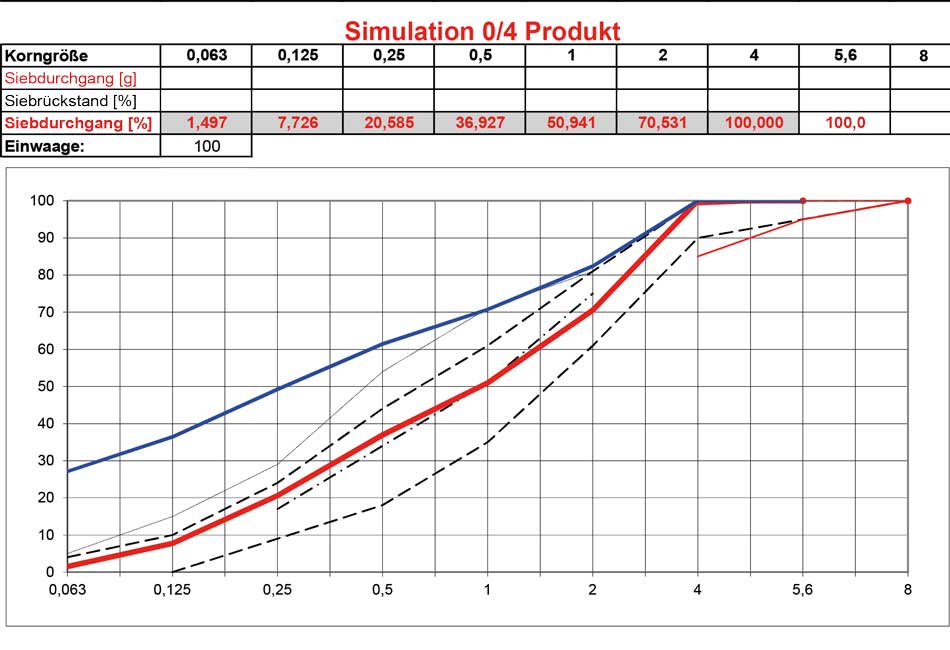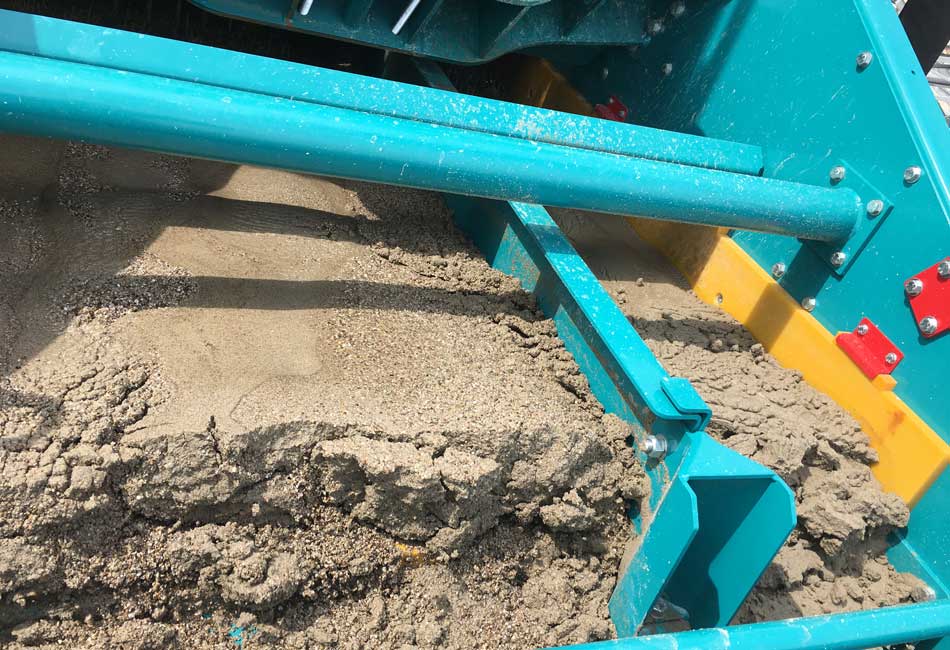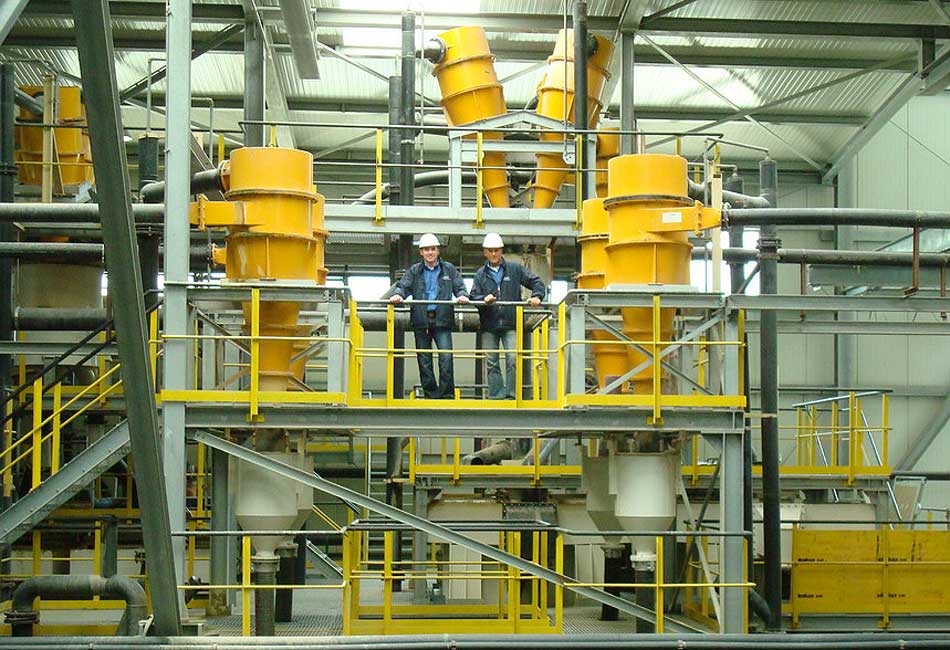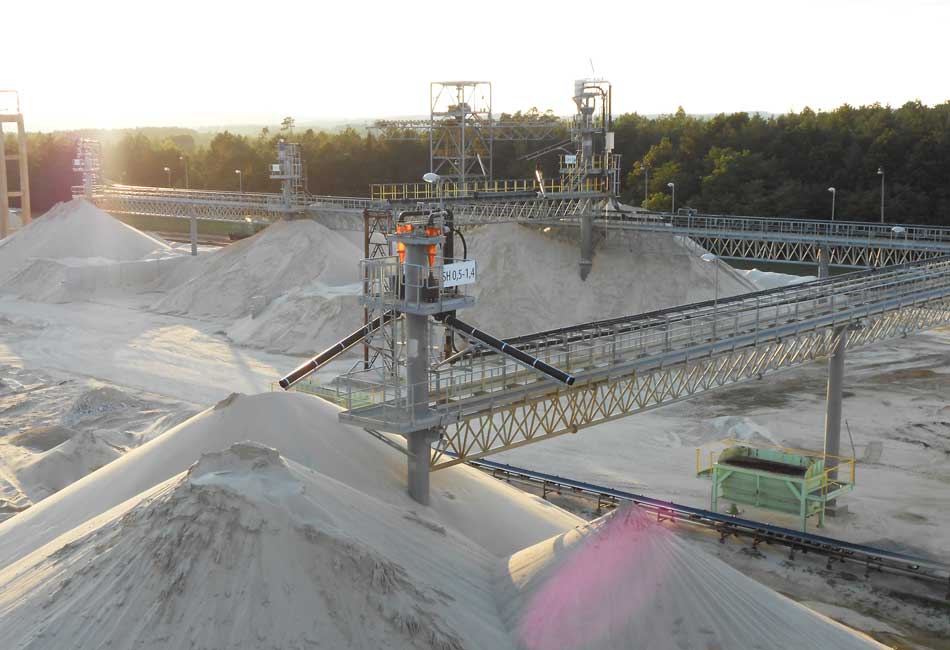PROCESSING SAND
CAB offers single-stage or two-stage equipment for processing sand, which has proven it can desludge, desand and dewater mixtures of sand and water and correct grain size curves and “sand bellies”.
Compact equipment CAB is good for desludging, dewatering or grain correction. We also design equipment individually and according to need and therefore meet the requirements of our customers. Compact equipment Depending on the task, CAB offers single-stage or two-stage design and, in combination with the art of screening technology, can address the most complex problems (e.g. “sand belly”, extreme amounts of sludge, …).
Extracting sand from lakes, rivers and dams for power plants is growing in popularity.
CAB equipment is also being newly used in the field of environmental protection (removing gravel from retention basins for flood areas, …)
Using suction dredgers, CAB has developed technology that processes, screens, desludges, corrects and deposits the material obtained from watercourses in heaps.
Natural material enriched with fine sand, complicated seams, various recycling materials and higher quality requirements increasingly require the correction of grains for concrete sand. CABrex equipment is able to produce the desired particle size through a single-step or two-step process.
CABrex equipment can be delivered in mechanical or automated embodiment.
Asphalt is produced from a mixture of binder and crushed rock and used in road construction for reinforcing carriageways and in building construction for floor coverings, and for insulation in constructing landfills.
Since the tightening of certain standards, the efficiency of screening filler material (e.g. 0-2 mm) for the crushed rock used in gravel has become especially important. Meeting the requirements in the case of dry technologies is becoming increasingly more difficult and so wet mechanical processing is being promoted more and more.
CAB is playing a decisive part in the development of this wet technology with its compact equipment and hydrocyclones, and today it is possible to separate undesirably high proportions of filler material by more efficient crushing means and in accordance with the standards. Even the current problem of losing fine sand in the dry removal of filler material (screening technology) for the critical subfractions of 0.063 to 0.3 mm has therefore been resolved. As a result, optimal desludged ingredients (aggregate), without loss of fine sand, has become the guarantee for producing quality asphalt.
Industrial minerals are crucial at the beginning of the value chain. Silica sand, kaolin, feldspar and other minerals cannot be imagined today separate from modern life. Each of us roughly consumes 12 tons annually of what is needed, for example, to build houses and industrial buildings, cars, computers, restaurants, etc. Since no two seams are the same, very diverse and often very complex manufacturing equipment needs to be used.
The main steps of the processing technologies are wet washing processes, friction, screening (counterflow screener), desludging and preliminary dewatering (hydrocyclone), dewatering (linear oscillation) and flotation.
Processing raw material begins with washing gravel made from crushed rock obtained from the seam. Depending on the degree of impurity and quality requirements of the customer, clean water is added to the raw material in various washing equipment (e.g. washing machines) to remove floatable components such as loam and clay and impurities such as wood, kaolin, coal, metal, etc., and then is furthermore sorted on vibrating screens or counterflow separators (T-Type) into different fractions according to the size of the grain.
The chemical composition of the gravel and sand is determined by the natural composition of the seam and cannot be changed by wet processing. The most important chemical grade indicator of sand and gravel is the content of SiO2. Depending on the target product, only quality silica sand can be used, with the content of SiO2 between 93% (refractories), 97% (foundry sand) and 99.9% (glass sand).
CAB focuses on the following priorities in processing silica sand:
Planning and design activities of CAB for complete silica processing equipment
LINATEX pumping equipment for highly abrasive media flow
CAB hydrocyclone equipment (desludging and pre-dewatering)
CAB dewatering screens
CAB vacuum dewatering systems
Steel structures and tanks (pump sump, controlled suction tank counterflow separator, dewatering silos, …)
LINATEX abrasion-resistance technology (pipes, bends, rubber-coated tanks such as pump sumps, counterflow separators, bottom tubs)
CAB/LINATEX transport hoses and conical pump connections for particularly abrasive slurry in the pipes








